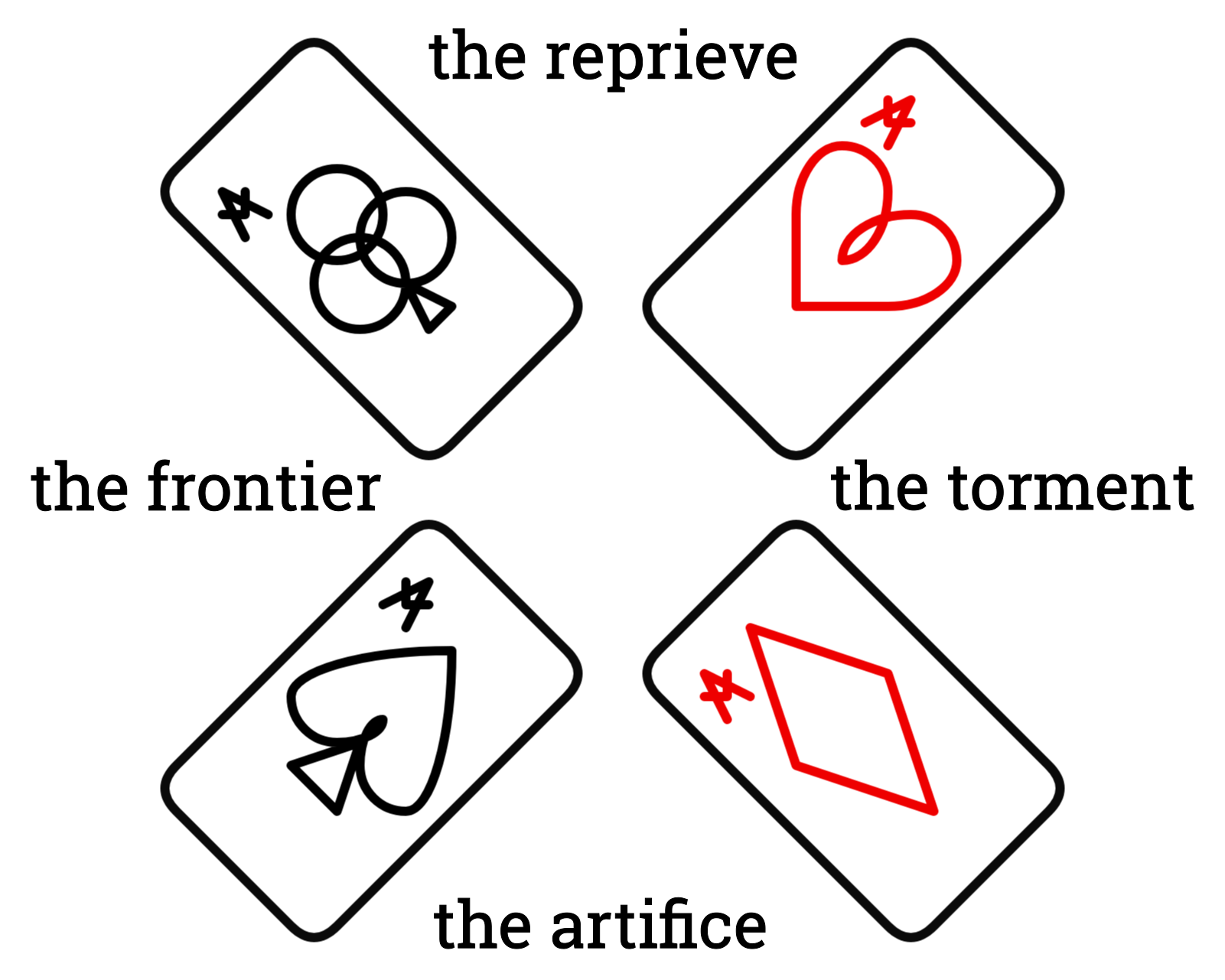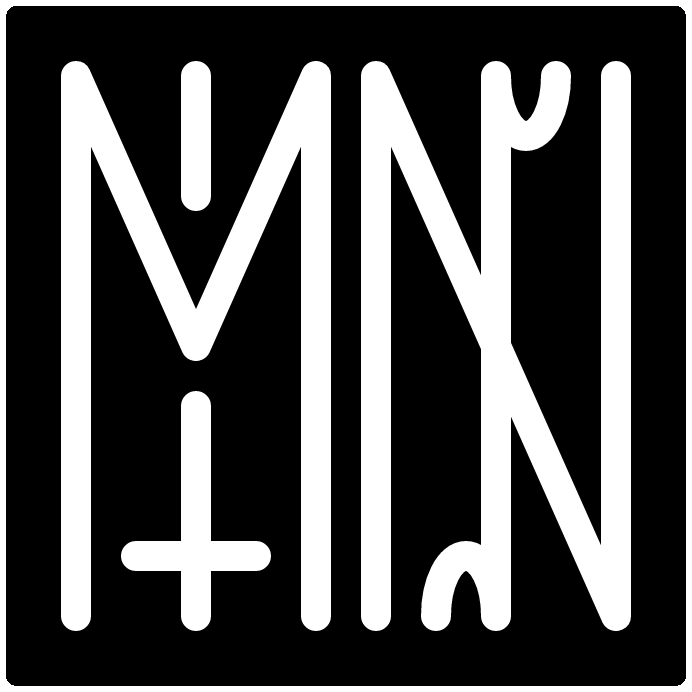semiosphere: a card game
my partner and i are currently working on designing a card game called  semiosphere. we aren’t done designing it yet, so it may not be ready to play.
semiosphere. we aren’t done designing it yet, so it may not be ready to play.
requirements
- 2-4 players
- a standard 52 card deck
overview
the game is set in the  semiosphere: the sphere of all signs, and their processes that operate with one another; the domain of all signs that contribute to and ultimately define a culture. it is a realm of ideas, a psychic and causal force that shaping our politics, communications, society, and planet.
semiosphere: the sphere of all signs, and their processes that operate with one another; the domain of all signs that contribute to and ultimately define a culture. it is a realm of ideas, a psychic and causal force that shaping our politics, communications, society, and planet.
there are four major influences at place in this space between minds: humanity (hearts), calamity (diamonds), technology (spades), and nature (clubs). your job is to collect ideas (cards) from various zones to build a cohesive philosophy. each turn, you will play a card from your hand into one of the four zones. you’ll either germinate an idea (discard a card into a zone), incubate an idea (combine your card with other cards in a zone), or culminate an idea(collect cards in a zone that match the value of the card you’ve played). at the center of the board, the four influences create the zones, which have restrictions on which actions can be taken. however, the location of the zones change! at the end of each round, the ideas that make up your philosophy (collected cards) are scored according to their value to humanity. the goal is to be the first player with 15 or more points.
setup
- choose one player to be the dealer
- separate the Ace cards and lay them so that:
- humanity (hearts) is opposite calamity (diamonds)
- technology (spades) is opposite nature (clubs)
- the intersection of two influences creates a zone
- the board will look something like this:

note: it doesn’t matter which cards are next to each other, as long as they’re opposite the right card.
- shuffle the deck, deal 3 cards face-up to each zone, and 4 cards to each player
- set the rest of the cards in the center as a draw pile
object of the game
the goal of semiosphere is to be the first player to ear 15 or more points. points are tallied at the end of each round. generally, 2-4 rounds are played. after each round, points are calculated:
| ending state | point value |
|---|---|
| most cards overall | +4 |
| most humanity (hearts) cards | +2 |
| most calamity (diamonds) cards | -2 |
turn of play
play begins to the left of the dealer, continuing clockwise. a player must play one card each turn and perform one of the actions: germinate, incubate, or culminate. see below for more information on actions.
concepts
the influences
there are four great influences in the semiosphere, each represented by a suit
| suit | name | meaning and representation |
|---|---|---|
| hearts | humanity | all that is good about mankind: creative, empathetic, critical, kind, inventive |
| diamonds | calamity | ecocide, war, societal failure, disease, famine and drought |
| spades | technology | technology in the broadest sense: agriculture, writing, semiconductors, etc. |
| clubs | nature | flora, fauna & fungi: their wholeness, timelessness, and indifference to man |
the actions
each turn, the player make take one of 3 conceptual actions:
| action | description |
|---|---|
| germinate | introduce a new idea to the culture of the zone |
| incubate | allow an idea to flourish and grow |
| culminate | synthesize an idea to its conclusion and add it to your philosophy for incorporation |
in practice, you will play one card from your hand to one zone, as long as that zone permits it.
germination
- to germinate an idea, discard a card in a zone, as long as that zone permits it
- germination is the simplest move; that’s all there is to it!
incubation
incubation is the trickiest of the actions, and the hardest to master as it involves two cards: an active card, and a passive card.
- to incubate an idea, you place your card onto an existing card
- you may only do so if you have the resulting sum present in your hand. for example: by placing a 3 on a 5, i must show that i have an 8 to do so. if the incubating cards are of matching value, you may choose to not add them and treat them as their value, e.g. incubating an 8 on another 8, and showing you have another 8 in your hand to do so. if this happens, stack the top card perpendicular to show that it is not a sum of the ideas, but rather a reinforcement.
- when incubating an idea, you can combine any number of ideas in a zone as with your active card as long as your passive card matches up
- for example, say you have 10 and a 5 in your hand. in the zone, there is a 2, and 3. you could combine the
- thereafter, the incubating idea is treated like a single idea for other players, and they my culminate this idea before you if able
- other players may also incubate on top of existing cards that are already incubating! this allows their value to mutate.
culmination
- to culminate an idea, play a card into a zone, and gather all ideas that match the value in that zone
- for example, by playing a 6 into a zone, i could collect:
- another 6
- a “6” made of two 3s
- a “6” made of a 4 an a 2
- or all of the above
- when culminating
the zones
the four influces lay across two axes:
- the axis of humanity and calamity
- the axis of technology and nature
as you play, these axes will flip, moving the zones around the board each time. where two influences touch, they create a zone. all zones have one action restricted, except the frontier.
| zone | cross-suits | restrictions |
|---|---|---|
| the torment | humanity & calamity | no culmination |
| the reprieve | humanity & nature | no incubation |
| the artifice | technology & calamity | no germination |
| the frontier | technology & nature |
the torment
the torment represents humans at odds with their natural environment: rising tides, fires, famines, droughts, and crises plague society. times are tough and no one is able to come to a conclusion of what to do to get out of the torment. new ideas are being germinated, and many are incubating, but there is no culmination to save us from the calamity.
restriction: players may not culminate ideas in the torment.
the reprieve
the reprieve represents willful ignorance and temporary abundance. there is enough food to go around, and nature provides, at least for some - but it won’t last forever. are people just sticking their heads in the sand when it comes to the looming threats? simple ideas can come to fruition here, but there is no room for incubating ideas that might rock the boat.
restriction: players may not incubate ideas in the reprieve.
the artifice
the artifice is the union of humanity and technology. man’s hubris has led him to be abundantly reliant on technology, past the point of no return.
the frontier
the frontier represents the positive combination of technology and nature - a time for challenging the status quo and seeing what else might be possible. a pivot point in history, but also a time of great vulnerability and high stakes. anything goes.
no restrictions
winning
gameplay
- play starts to the left of the dealer
- each player must take an action
- if a zone runs out of cards
- the player who cleared the zone …?
- then refresh the zone with 3 new cards
- play until all players run out of cards
scoring
inspirations
semiosphere is heavily inspired by:
- the illimat - designed by keith baker, the semiosphere heavily borrows from the core gameplay loop in the illimat: harvest, sow, and stockpile. the general concept of having fields/zones in where to play, as well as generally gaining points to win, are also from the setup of the illimat. we really enjoyed playing this game but felt that some of the thematic content didn’t exactly make sense: why were certain okus tokens chosen? why were certain luminaries chosen? they don’t necessarily go with the rest of the game in my opinion. however, the core gameplay loop of harvest/sow/stockpile is really fun, and we wanted to play this game more often, but wanted to adapt the concept to something more thematic, and constrained to using standard decks of cards.
TODO
- special cards
- coin flipping, with positive / negative outcome per zone
referenced by:  traditional-deck
traditional-deck


 learn-orca
learn-orca learn-uxn
learn-uxn